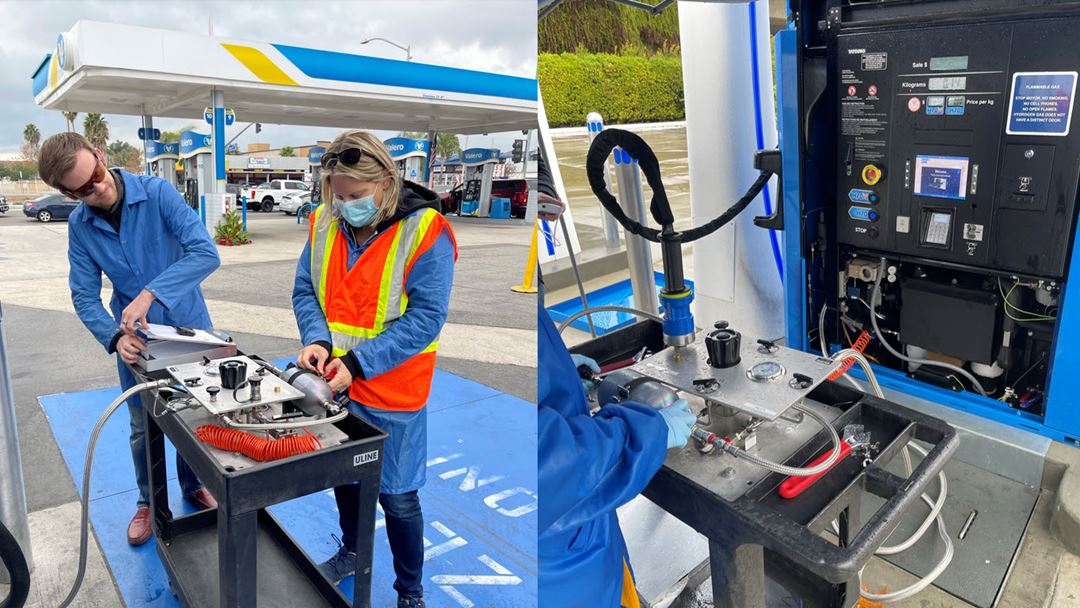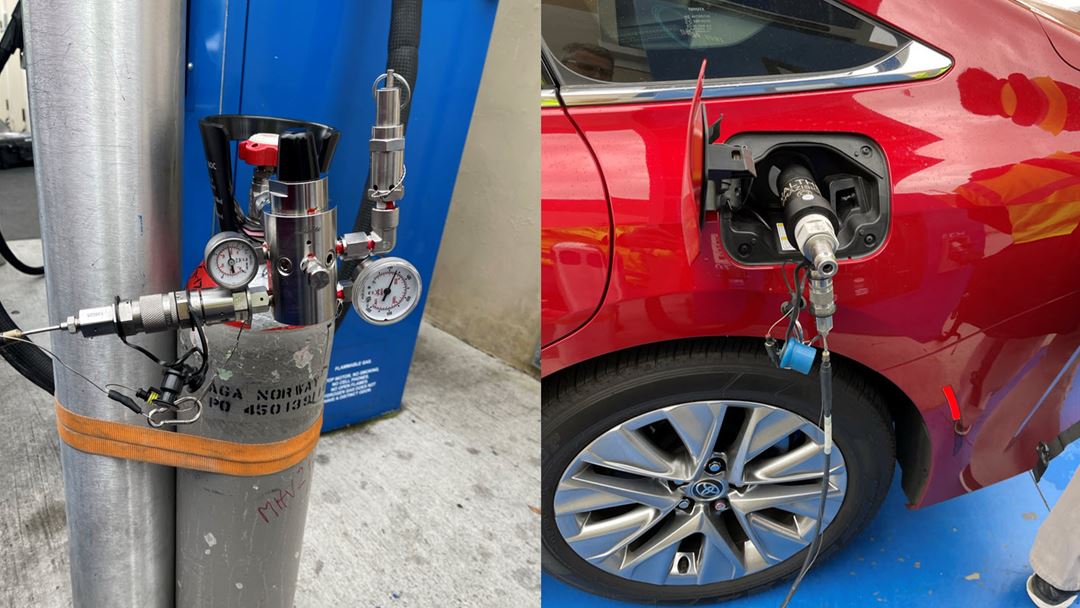Bilateral sampling for hydrogen fuel quality control in California
With an increasing number of hydrogen powered vehicles coming to market around the world, ensuring the quality of the hydrogen fuel being dispensed at hydrogen refueling stations is essential.

Standard developing organizations are working hard to keep up with emerging technologies for renewable sources. As part of the EMPIR funded MetroHyVe 2 project, representatives of both ISO TC197 and ASTM D03.14 met up in California in December 2021 to systematically compare their strategies for hydrogen fuel quality control.
Standard practice for dispensed hydrogen fuel quality control is to collect a representative sample from the nozzle of the HRS. In the US, the methodology has been developed in ASTM D7606 Standard Practice for Sampling of High Pressure Hydrogen and Related Fuel Cell Feed Gases. The sample is collected at reduced pressure through a sampling device that either vents to air or through connection to the HRS safety vent. A sampling cylinder open in both ends is used and extensive purge-though is performed before the sample is collected. The procedure requires the HRS to be put in manual mode.
In Europe, most of the hydrogen fuel quality control has been performed by using a commercial sampling adapter from Linde. “The Qualitizer” makes use of a T-piece between the HRS nozzle and the vehicle to bleed off a sample during a normal refueling. The sample is collected in a 10 L single-ended cylinder. No venting of hydrogen is performed except from a small volume from depressurization of the adapter after use. The procedure does not require the HRS to be put in manual override.
ISO TC 197 is currently developing a standard for sampling of hydrogen fuel for quality analysis. ISO 19880-9 is collecting information on state-of-the-art techniques for sampling globally. In addition to the ASTM and EU strategies, the standard is also including the Japanese approach. For this standard, it is important to establish knowledge of whether there are systematic differences between the sampling strategies. The MetroHyVe 2 project has therefore defined activities for bilateral comparison of EU – ASTM and EU – Japanese strategies.
The first of these intercomparison activities was completed in California on December 13 and 14 2021. Christina Daniels and Andrew Adkins with the California Department of Food and Agriculture Division of Measurement Standards and Thor Aarhaug from SINTEF took part in the campaign, executing the ASTM and EU sampling strategies respectively.
Back-to-back sampling of fuel were performed with EU and ASTM strategies at two HRS in Southern California with support from HRS operator First Element and Toyota Motor North America providing a vehicle for sampling.
The samples will be analyzed by both CDFA and National Physics Laboratory in the UK for direct comparison of the results. Further, sample transfer from 10 L cylinders to smaller cylinders will be performed to investigate if sample transfer has a significant impact on the analytical results. The 10 L bottles will be analyzed by CDFA before they are shipped to Europe. Sample cylinder type, effect of time between sampling and analysis are still open questions that are being investigated in the MetroHyVe project.
The results from the study will be published early 2022.

